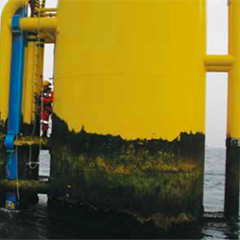A company that is firmly focussed on the “many challenges out there to make construction and maintenance in the offshore industry more safe and efficient,” Ztechnologies is an acknowledged, and celebrated, innovator. We spoke to the organisation’s Reinout Prins.
PES: Welcome to PES. Would you like to introduce the company and tell us a little about how you serve the wind industry?
Reinout Prins: Our company Ztechnologies was founded in 2009 by three shareholders, and our experience relates to projects in the offshore Oil & Gas industry, and running companies involved in steel construction and ship repair.
For the offshore industry, I developed and patented the first ship to structure bridge, the OAS of which many have been built and are still in use, mainly in the PG.
Through our experience in the offshore sector and our knowledge of ships, we anticipated (in 2009!) a floating harbour system for maintenance of far offshore wind farms that were starting to be developed back then. We decided to take part in the Carbon Trust Accelerator contest with our Zport design, which won the first price in its category. This allowed us to develop the idea further with tank test. But through meetings at the Carbon Trust we met many people working in the new and upcoming market of offshore wind farms and we discovered we were too early with this idea.
There was first a need of better accessibility to turbines and their foundations. This made us to develop Zstep, Zcatch and Zbridge first, before developing Zport further.
PES: We are interested in your work on the OWEZ North Sea windfarm. Would you like to elaborate?
RP: We were allowed by the owners to use OWEZ as a test site for our Zstep. This is a maintenance free, safe and reliable way to access a TP from a transfer vessel. The Zstep is a platform with a counterweight and this system is mounted against the boat landing of a turbine foundation. When attached to the transfer vessel, it will move with the vessel vertically and while doing so it makes it very easy and safe to step over.
PES: We note that your company literature has an emphasis on ideas. How far away are you from turning these ideas into reality?



























